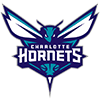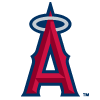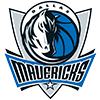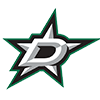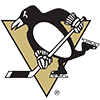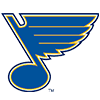I typically like to write this article right as players report to camp, but this season's unusual timing made that tough to do. A large number of fringe players, the sort who make up the bulk of this article, weren't signed prior to the lockout, so the specifics of position battles around the league were far from clear. That's not the case anymore, so we'll jump in with the American League's top job battles, followed by National League in the next few days.
This piece is primarily targeted toward those in deeper leagues, as most of the players worth drafting in shallower formats are good enough that they have a firm grip on playing time, though there a players with more universal relevance included as well. If there's an American League job battle you were hoping to read about that's not coverered, feel free to ask about it in the comments.
Baltimore Orioles
Infield: Ryan Mountcastle is locked into the first base job, but the rest of Baltimore's infield spots are up for grabs. Rougned Odor probably has the inside track at second base, but he hasn't produced an above-average batting line since 2016, hitting .213/.280/.412 the last five years. Kelvin Gutierrez was the third baseman down the stretch but is a .234/.295/.319 hitter in parts of three big-league seasons. Ramon Urias and Jorge Mateo look like the top candidates for shortstop, with the loser also in the mix at the other spots. Urias has actually shown something at the
I typically like to write this article right as players report to camp, but this season's unusual timing made that tough to do. A large number of fringe players, the sort who make up the bulk of this article, weren't signed prior to the lockout, so the specifics of position battles around the league were far from clear. That's not the case anymore, so we'll jump in with the American League's top job battles, followed by National League in the next few days.
This piece is primarily targeted toward those in deeper leagues, as most of the players worth drafting in shallower formats are good enough that they have a firm grip on playing time, though there a players with more universal relevance included as well. If there's an American League job battle you were hoping to read about that's not coverered, feel free to ask about it in the comments.
Baltimore Orioles
Infield: Ryan Mountcastle is locked into the first base job, but the rest of Baltimore's infield spots are up for grabs. Rougned Odor probably has the inside track at second base, but he hasn't produced an above-average batting line since 2016, hitting .213/.280/.412 the last five years. Kelvin Gutierrez was the third baseman down the stretch but is a .234/.295/.319 hitter in parts of three big-league seasons. Ramon Urias and Jorge Mateo look like the top candidates for shortstop, with the loser also in the mix at the other spots. Urias has actually shown something at the plate in 95 career games, hitting .286/.365/.425 while producing a 9.3 percent barrel rate. Mateo's 11 steals in 237 MLB plate appearances make him an interesting fantasy option, but his .236/.281/.364 career slash line may not earn him regular at-bats. Veteran utility man Chris Owings is an option as a non-roster invitee, while Shed Long has yet to get into a game this spring but could eventually push for starts once he recovers from October leg surgery.
Rotation: Spots are up for grabs in the Orioles' rotation, with only John Means and probably Jordan Lyles looking secure. Bruce Zimmermann struggled to a 5.04 ERA in 14 outings last season, striking out just 19.6 percent of batters, though those numbers look respectable next to his competition. Zac Lowther made six starts and four relief appearances in his debut season, beating Zimmermann slightly in strikeout rate (21.7 percent) but posting a poor 6.67 ERA. Keegan Akin finished with a similar 6.63 ERA in 95 innings, with his strikeout rate falling from 30.2 percent in his 25.2-inning debut the prior year all the way to 19.2 percent. Jorge Lopez has much more MLB experience than the aforementioned trio but has finished with an ERA north of 6.00 in three consecutive seasons. The wild card is Tyler Wells. He was a starter in the minors but debuted last season in a relief role after missing the previous two seasons due to Tommy John surgery. His 4.11 ERA was nothing special, and his 21.4 percent groundball rate is a red flag, but his 29.0 percent strikeout rate and 5.4 percent walk rate make for a promising combination.
Closer: Wells could be part of this battle if he doesn't win a rotation spot. Otherwise, it looks like it's between Cole Sulser and Tanner Scott. Sulser saved eight games last season while cruising to a 2.70 ERA and a 28.4 percent strikeout rate. Scott, a lefty, posted a similar 27.9 percent strikeout rate last season but also walked 14.7 percent of batters, leading to a 5.17 ERA.
Boston Red Sox
Fifth Starter: Things look quite settled in Boston, so the only job seemingly up for grabs is a temporary one until Chris Sale returns from his rib cage stress fracture. Nathan Eovaldi, Nick Pivetta, Tanner Houck and Michael Wacha were named to the other four spots, leaving Rich Hill and Garrett Whitlock to battle for the fifth starter job. Hill managed a 3.86 ERA for the Rays and Mets last season, though his peripherals were unimpressive. He struck out a sub-par 22.7 percent of batters and generated a 35.2 percent groundball rate, his lowest since 2009. Whitlock, who was in middle school in 2009, was a major success as Rule 5 pick last season, cruising to a 1.96 ERA while posting strikeout, walk and groundball rates that easily beat league average. He exclusively pitched out of the bullpen, so expect a downturn in his numbers if he returns to the rotation, but he was a starter throughout the minors, so the role shouldn't be hard for him to adjust to.
Chicago White Sox
Right Field/Designated Hitter: Second-year players Gavin Sheets and Andrew Vaughn should have the edge. Sheets swung a hot bat in 54 games last season, homering 11 times while batting .250/.324/.506. Vaughn has more prospect pedigree but was less impressive as a rookie, homering 15 times in 127 games while posting a .235/.309/.396 line. His 10.9 percent barrel rate and 21.5 percent are both encouraging, however. Neither player is much of a defender in the outfield, so the White Sox could also turn to Adam Engel or Leury Garcia in right. Injuries limited Engel to 39 games last season, but he owns a 124 wRC+ in 233 plate appearances across the last two years combined, homering 10 times while stealing eight bases. Garcia, who also serves as a backup infielder, matched his full-season high with a 98 wRC+ last season, a respectable number but one which fits best in a utility role.
Cleveland Guardians
Corner Outfield: Stop me if you've heard this one before: the Guardians will attempt to cobble together an outfield out of a set of unconvincing parts this season. Myles Straw seems locked in as the center fielder, but the other spots remain open for the 512th consecutive season. Bradley Zimmer might have the most fantasy upside, as he homered eight times and stole 15 bases in 99 games last year, but that came with an awful 35.1 percent strikeout rate and an unimpressive .227/.325/.344 line. Oscar Mercado could have late-round value if he earns a regular role, as his six homers and seven steals in 238 plate appearances last season equate to 15 and 18, respectively, across 600 trips to the plate. His .224/.300/.369 line doesn't make a great case for at-bats, however. Josh Naylor has a bat that got good reviews from scouts, but he owns a .695 career OPS in 203 MLB games and is behind to start camp as he makes his way back from a lower-leg injury. Steven Kwan is the interesting sleeper, as he owns an elite 9.2 percent strikeout rate in his minor-league career, but he's unlikely to produce much other than a strong batting average and may not get a legitimate shot to break camp in the majors.
Detroit Tigers
First Base: If the Tigers are willing to start Spencer Torkelson's clock, this isn't a battle. The 2020 first overall pick is poised to be the first baseman in Detroit for the foreseeable future, though he was more good than great in 40 games for Triple-A Toledo last season, batting .238/.350/.531. If Torkelson doesn't break camp with the team, expect Jonathan Schoop to hold the fort. A second baseman for most of his career, Schoop primarily played first last season, but his decent .278/.320/.435 line looks a lot better if he returns to second.
Second Base: This battle also depends on Torkelson, as Schoop probably will get the bulk of the playing time if he's not needed at first base. Willi Castro is also an option, but he saw his batting line crater from .349/.381/.550 (in just 36 games) in 2020 to .220/.273/.351 last year. Isaac Paredes has had the bat knocked out of his hands at the highest level, producing a 0.7 percent barrel rate in 57 games to go with a .215/.290/.302 line, but he walked more than he struck out for Triple-A Toledo last season while posting a 132 wRC+. Harold Castro doesn't do much except make contact, but his .291/.315/.375 career batting line makes him a capable utility man.
Center Field: This spot is earmarked for promising rookie Riley Greene, so it's not a battle if the Tigers are open to starting his clock right away. The 2019 fifth overall pick hit .308/.400/.553 in 40 Triple-A games last season, though his 27.6 percent strikeout rate is at least a minor worry. If Greene isn't given a chance right away, the Tigers will turn to Victor Reyes or Derek Hill. Neither has accomplished much at the plate, with Reyes owning a career .681 OPS and Hill's even lower at .669.
Houston Astros
Shortstop: This might not actually be much of a battle, as Jeremy Pena is supposed to eventually establish himself as Carlos Correa's heir apparent and could be given the chance to start right away. He produced a strong .944 OPS in 30 Triple-A games last season, though his 26.3 percent strikeout rate and 4.5 percent walk rate make for a potentially worrying combination. If Pena doesn't get the job out of camp, expect some combination of utility men Aledmys Diaz and Niko Goodrum to hold the fort. Diaz has the better bat, with a 107 career wRC+ compared to 88 for Goodrum, but Goodrum has more speed (14 steals in 90 games last season) and the better glove.
Center Field: This should eventually be a contest between Jake Meyers and Chas McCormick, but Meyers will open on the injured list after November shoulder surgery. McCormick isn't necessarily far ahead of the alternatives in the meantime, as his respectable .257/.319/.447 line as a rookie last season may have been an over-achievement considering his 32.5 percent strikeout rate. Jose Siri could start as well, especially against lefties. He hit .304/.347/.609 in a tiny sample of 49 plate appearances last season but struck out an even worse 34.7 percent of the time. Lewis Brinson is in camp as a non-roster invitee and could enter the picture if the Astros finally unlock his supposed potential, but he's been nowhere near good enough through parts of five big-league seasons. His poor 74 wRC+ last year was a career high.
Kansas City Royals
Third Base: Things look pretty settled around the diamond for the Royals, with the main question being whether Bobby Witt Jr. will truly get the chance to debut on Opening Day. The new CBA's service-time rules should encourage the Royals to go that route, as he'll get a year of service time regardless of when he debuts if he finishes in the top two in Rookie of the Year voting, and they seem open to the idea, so this may not be a battle at all. Witt looks ready after hitting .290/.361/.575 with 33 homers and 29 steals in the upper minors last season. If he heads back to Triple-A temporarily, the Royals could start Hunter Dozier at the hot corner, leaving the designated hitter open to rotate players through. Alternatively, Whit Merrifield could return to the infield, leaving right field open for Kyle Isbel (108 wRC+ in 28 games last year) or Edward Olivares (88 wRC+ in 39 games).
Los Angeles Angels
Second Base: David Fletcher primarily played this spot last year, but he'll switch to shortstop this season, leaving a large mix of players fighting for time at second. Tyler Wade is the only one with notable fantasy appeal, and that's all tied up in his 17 steals in 145 plate appearances last season, as he's a career .212/.298/.307 hitter who owns a lifetime 1.9 percent barrel rate. Luis Rengifo is just 25 and was once a moderately interesting prospect, but he's hit just .216/.293/.325 in 195 career games. Matt Duffy has been an above-average hitter in three of his six MLB campaigns, including last year when he produced a 102 wRC+ as a part-timer for the Cubs, but he's more of a third baseman than a second baseman. Utility infielders Jack Mayfield (64 career wRC+) and Andrew Velazquez (44 career wRC+) probably aren't serious candidates for anything more than a bench role.
Corner Outfield: Two young players and one veteran will fight for these two spots. Jo Adell has yet to deliver on his considerable prospect pedigree, hitting .205/.255/.339 in 73 career MLB games, but he's still just 22. His 9.1 percent barrel rate and 22.9 percent strikeout rate last season were both better than league average. Brandon Marsh also has considerable prospect pedigree but recorded a forgettable .254/.317/.356 line in his 70-game debut last season. His 10.9 percent barrel rate indicates plenty of pop, but he struck out in 35.0 percent of his trips to the plate. Then there's Justin Upton, who debuted before either Adell or Marsh turned 10 years old. He hit .247/.336/.480 in the first half last season but collapsed to hit .126/.200/.242 after the break.
Backend Starters: Two spots are seemingly up for grabs at the back of the Angels' six-man rotation. Michael Lorenzen will get the chance to start, something he's done just five times since 2015. He struggled to a 5.59 ERA in 29 innings of relief for the Reds last season, striking out 16.8 percent of batters while walking 11.2 percent. Reid Detmers is an exciting young lefty, even if he didn't really demonstrate that last season, posting a 7.40 ERA in five MLB starts. To be fair, that came at the end of his first professional season, as he missed 2020 due to the canceled minor-league schedule and had made just 13 minor-league starts when he received his call-up. Jaime Barria is the alternative. The 25-year-old posted a low 14.0 percent strikeout rate and an unremarkable 4.61 ERA in 11 starts and two relief appearances last year.
Minnesota Twins
Catcher: Two-time All-Star Gary Sanchez was acquired in a trade with the Yankees shortly after the end of the lockout, but he's merely expected to compete for at-bats with Ryan Jeffers. Sanchez bounced back from an awful 2020 campaign to hit .240/.307/.423 (good for a 99 wRC+) with 23 homers last season. Jeffers is similarly a power-over-contact backstop. He's struck out in 35.8 percent of his 355 MLB plate appearances but has homered 17 times, batting .211/.285/.407.
Third Base: Gio Urshela, who was part of the same trade, is the primary option at third, but he slipped to a .267/.301/.419 line last season after batting .310/.358/.523 the previous two years. Utility man Luis Arraez could spend much of his time at the hot corner if Urshela is mediocre again. He's one of the best contact hitters in the league, striking out just 9.1 percent of the time while hitting .313 in 245 career games, but that's about all he does at the plate, as he's homered just six times. Jose Miranda could also push for starts. He's yet to make his big-league debut but hit .343/.397/.563 with 17 homers and a 13.1 percent strikeout rate in 80 Triple-A games last season.
New York Yankees
Catcher: The Yankees had seemingly been growing tired of Gary Sanchez the last few years, but they don't have the most convincing set of alternatives available after shipping him to Minnesota. Ben Rortvedt was acquired in that trade and has at least modest prospect pedigree, but he struggled to an awful .169/.229/.281 line in his 39-game debut last season. He might miss Opening Day due to an oblique injury, in which case Kyle Higashioka wins this job by default. Nothing he's shown in 139 career major league games makes him look like much more than a backup, though, as he owns a lifetime .183/.234/.385 line. You can squint and see some upside in his 15.6 percent barrel rate in limited action last season, but he's in his age-32 season, so a step backward is more likely than a step forward.
Middle Infield: The Yankees have one too many infielders after acquiring Josh Donaldson and Isiah Kiner-Falefa from the Twins. Of the nine players vying for the eight non-catcher spots in the starting lineup, Kiner-Falefa is the weakest offensively, with a career wRC+ of 81. He has little punch, as his eight homers last season were a career high, but he also might be the only player the Yankees trust at shortstop, as the team moved Gleyber Torres off the position late last year. Torres struggled on both sides of the ball last season, finishing with a career-low 94 wRC+. He may now be primarily a second baseman, but that's also DJ LeMahieu's best fit. It's possible LeMahieu fades into more of a utility role, as he's now 33 and slipped to a modest 100 wRC+ last season. He could start ahead of Torres at second base in some games while also spelling Donaldson and Anthony Rizzo at the infield corners.
Oakland Athletics
First Base: Oakland elected to tear things down this winter, leaving holes everywhere, including a Matt Olson-shaped hole at first base. None of the candidates project to come anywhere close to his production. Eric Thames joined the team on a minor-league deal and has a path to playing time, but he's 35 and hasn't been productive since 2019. He struggled to a 68 wRC+ in 2020 before heading to Japan last season, where he missed most of the year with a torn Achilles. Chad Pinder could play first base if he isn't needed elsewhere. He's been basically a league-average hitter (98 wRC+) in his six-year career, but his 16.3 percent barrel rate in a part-time role last year hints that there's more there. Seth Brown, who also may be needed elsewhere, saw his first extended taste of big-league action last season. In 307 plate appearances, his lopsided .214/.274/.480 line was good for a 103 wRC+.
Third Base: This could be Pinder's spot, though it could also belong to Kevin Smith, who arrived from Toronto in the Matt Chapman trade. Smith stumbled to a .382 OPS in a tiny sample of 36 plate appearances at the MLB last season, but he hit .285/.370/.561 with 21 homers and 18 steals in 94 Triple-A games. Sheldon Neuse is also in the mix, though his .207/.236/.314 line in 58 career games is quite poor.
Corner Outfield: Two spots are available early in the year, with the number dropping to one in early May after Ramon Laureano returns from his PED suspension. Pinder and Brown are candidates for these spots as well, as is Stephen Piscotty. Piscotty hit .268/.341/.455 in his first four seasons but has hit just .237/.293/.385 in his last three.
Designated Hitter: Anyone who doesn't win one of the above battles could serve as designated hitter. They'll compete for playing time with Jed Lowrie, who could occasionally start in the infield as well. Lowrie is now 37 but has hit .263/.345/.432 since the start of the 2017 season.
Backend Starters: The lineup isn't the only place where the Athletics have questions. One permanent rotation spot is up for grabs, plus another temporary one until James Kaprielian returns from his shoulder injury. Daulton Jefferies, Paul Blackburn and A.J. Puk look like the top candidates. Jefferies missed time with injuries last season, making 15 starts for Triple-A Las Vegas and posting a mediocre 20.5 percent strikeout rate and a 4.91 ERA. He also threw 15 major league innings, recording a 3.60 ERA despite a 13.8 percent strikeout rate. Blackburn showed little in nine starts, stumbling to a 5.87 ERA and a 14.9 percent strikeout rate. Puk, the 2016 sixth overall pick, is easily the most exciting of the group, but his career has been wrecked by injuries. Entering his age-27 season, he's only thrown 24.2 innings, all of which have come in relief. His 4.74 ERA is far from impressive.
Seattle Mariners
Catcher: Three backstops figure to split time behind the plate in Seattle. Luis Torrens spent much of his time at designated hitter last season, though his .243/.299/.431 line (good for a 101 wRC+) looks much better if he plays behind the plate. Fellow 25-year-old Cal Raleigh comes with a fair amount of prospect pedigree, but he didn't show much of it in his 47-game debut last season, striking out 35.1 percent of the time en route to a .180/.223/.309 line. Veteran Tom Murphy fell somewhere between the two, hitting .202/.304/.350. Raleigh graded out as the best defender of the three, with Torrens looking quite poor in his limited defensive opportunities, ranking as the ninth-worst pitch framer according to FanGraphs despite catching just 35 games.
Outfield/Designated Hitter: This may not actually be a battle on Opening Day, but it should become one not long after. Kyle Lewis isn't expected to break camp with the team as the Mariners bring him along slowly due to the knee injury that wiped out much of his 2021 season, but he should factor in heavily once he's available. That could potentially increase the incentive for Seattle to call up Julio Rodriguez, one of the top prospects in baseball, despite not yet reaching Triple-A. Eventually, those two will join Mitch Haniger, Jarred Kelenic and Jesse Winker. Haniger should be an everyday player after homering 39 times and posting a 120 wRC+ last season. Kelenic stumbled to a .181/.265/.350 line in 93 games after debuting with big expectations, but he's still just 22 and has a job unless he plays himself out of one. Winker broke out in Cincinnati the last two years, hitting a combined .292/.392/.552, though he struggles against lefties. He's also been taking grounders at first base, which could offer a path to keeping all five players in the lineup.
Fifth Starter: Four players are fighting for the fifth rotation spot. Justus Sheffield is the only one with MLB experience, but he hasn't shown much in 174.1 career innings, struggling to a 5.58 career ERA and a 6.83 mark last season. Matt Brash earned his first career call-up late last season but didn't get into a game. He's yet to pitch above Double-A but struck out 36.0 percent of batters at that level last season while cruising to a 2.13 ERA in 10 starts. George Kirby similarly hasn't pitched about Double-A but recorded a 2.53 ERA in 15 starts between High-A and Double-A last season, backing that number up with a 29.2 percent strikeout rate and a 5.5 percent walk rate. Levi Stoudt has even less Double-A experience than Brash and Kirby, making just three starts there last season, but he's supposedly in the battle as well.
Closer: This isn't a proper battle, as the Mariners intend to use a committee, but figuring out the hierarchy within that setup matters for fantasy players, as a pitcher with 15-20 saves and great ratios still matters in an era with fewer and fewer true closers. Drew Steckenrider led the team with 14 saves last season and finished with a 2.00 ERA, though his 21.7 percent strikeout rate wasn't typical closer material. Paul Sewald broke out in his age-31 season, riding an elite 39.4 percent strikeout rate to 11 saves and a 3.06 ERA. Diego Castillo has 28 career saves, most of which came with the Rays. He posted a career-high 32.2 percent strikeout rate last season and a 2.78 ERA. Ken Giles has plenty of closer pedigree, saving 115 games for the Phillies, Astros and Blue Jays while striking out 33.3 percent of batters and posting a 2.74 ERA. He should be ready to go after missing most of the last two seasons due to Tommy John surgery.
Tampa Bay Rays
Backend Starters: At least one spot in the Rays' rotation is open for the early part of the season while Shane Baz recovers from arthroscopic elbow surgery, and another may become available if Luis Patino's shoulder soreness turns out to be serious. He was scratched from a start last week but continues to throw bullpens. Ryan Yarbrough made 21 starts last year and likely has the inside track, but he's coming off a season in which he posted a career-high ERA (5.11) and a career-low strikeout rate (17.9 percent). Josh Fleming had a similar season as a swingman, striking out just 14.5 percent of batters en route to a 5.09 ERA. Jalen Beeks is also in the picture after returning from Tommy John surgery. He owns a career 4.54 ERA in 174.1 innings, mostly serving as the bulk reliever behind an opener.
Texas Rangers
Third Base: This originally looked like a battle between Josh Jung and Isiah Kiner-Falefa, but Jung will miss at least six months following shoulder surgery and Kiner-Falefa is now a Yankee. That leaves Brad Miller and Andy Ibanez as the likely favorites. If a platoon develops, the left-handed Miller would see the majority of the at-bats. He's posted a barrel rate north of 12 percent in three consecutive seasons as a part-time player, hitting .236/.331/.480 over that stretch. Ibanez debuted at age 28 last season and hit .277/.321/.435 in 76 games, striking out just 12.9 percent of the time. Yonny Hernandez could factor into the picture and would have some fantasy value if he carved out a role, as he stole 11 bases in 43 games last year. His legs are much better than his bat, however, as he hit .217/.315/.252 with a miniscule 0.9 percent barrel rate. The 36-year-old Matt Carpenter is in camp as a non-roster invitee, but he hasn't produced an above-average batting line since 2018.
Left Field: This could be Miller's spot if Ibanez or anyone else wins the job at the hot corner. If not Miller, it could be Nick Solak, who no longer has at-bats available at his primary position of second base following the addition of Marcus Semien. Solak struggled much of last season and was demoted in July, but he rebounded to hit .290/.367/.387 after returning in late August. Willie Calhoun should also get his chance. He made tons of contact last season, striking out a career-low 12.0 percent of the time, but he didn't hit the ball with much authority, resulting in a 3.5 percent barrel rate and a .691 OPS. Eli White represents the defense-first option and has been a full participant in spring games after September elbow surgery, but he owns a .546 OPS in 83 career games. Leody Taveras has already been sent down and is out of the picture. Whoever loses both this battle and the battle for third base will have the chance to get at-bats at designated hitter.
Fifth Starter: Three young righties and a veteran lefty are competing for the Rangers' final rotation spot. Spencer Howard was one of the game's more interesting pitching prospects prior to his debut with the Phillies in 2020, but he's gone on to produce a 6.93 ERA with a poor set of peripherals in 74 major-league innings since. A.J. Alexy recorded a passable 4.70 ERA in 23 innings last season, but that came with a 17:17 K:BB. Glenn Otto stumbled to an awful 9.26 ERA in his six-start debut, but his peripherals tell a very different story. His 25.2 percent strikeout rate, 7.2 percent walk rate and 44.4 percent groundball rate were all better than league average. If none of the young arms earn a spot, the job could go to Matt Moore, though he's merely a non-roster invitee and owns a 6.23 ERA dating to the start of the 2018 season.
Toronto Blue Jays
Catcher/Right Field/Designated Hitter: The main battle in Toronto sees four players competing for three spots. Teoscar Hernandez has emerged as a star and will be an everyday player, but it's unclear if he'll be the primary right fielder or designated hitter. If he's the designated hitter most nights, that leaves right field open for Raimel Tapia, who stole 20 bases last season while striking out just 13.1 percent of the time but still managed a poor .699 OPS, a number that looks considerably worse once you take into account that he played half his games at Coors Field. Hernandez as the DH also forces Danny Jansen and Alejandro Kirk to fight for time behind the plate. Jansen is a good defender but is a career .212/.298/.396 hitter. Kirk has limited MLB experience and a poor defensive reputation, but his combination of an 11.0 percent barrel rate and an 11.6 percent strikeout rate in 60 games last season is rare. The Blue Jays can fit Kirk's bat in the lineup most games without losing Jansen's glove if Kirk serves as the designated hitter, pushing Hernandez to right field and Tapia to the bench.
Second Base: This is the weak link in an otherwise loaded Blue Jays lineup. Cavan Biggio posted a 117 wRC+ in his first two years in the league but stumbled to an 84 wRC+ last year while battling injuries. The alternative is Santiago Espinal, who made a ton of contact (12.2 percent strikeout rate) but showed little power (1.6 percent barrel rate) last season. He hit .311, but a .267 xBA suggests he overachieved by a wide margin.









